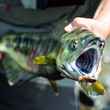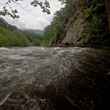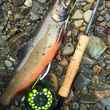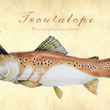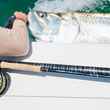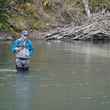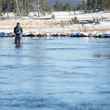“Luckily, though, there are still a few guys around who will look you straight in the eye and say, eloquently and to the point, ‘It’s been too goddamned hot for too long and the river has gone off.’” — John Gierach, Sex, Death, and Fly-Fishing
I cut my fly fishing teeth on John Gierach, and when he first published those words back in 1990, it all seemed innocent enough. Sure, ’88 was a hot son-of-a-gun, and the legendary waters around Yellowstone were beaten up by the heat in ways that nobody back then ever anticipated. Still, it seemed like an anomaly. Weather does crazy stuff. Some years are wet, others are dry; some are hot, some are cold, and some, on those occasions when the fishing gods happen to smile down from on high, are classic ‘Goldilocks' just right. That’s how it always worked, and nobody I knew back in the early ‘90s ever considered that things might end up differently.
Fast forward to 2014, though, and any mention of extreme weather starts to sound ominous.
“Fluctuations in the weather used to be just that, but now, with everyone looking over their shoulders at global climate change, there’s the fear that any extreme could become the new normal. And when you guide fishermen for a living, the thought of your rivers drying up is the stuff of nightmares.”That’s Gierach again, from his book All Fishermen Are Liars, and he frames our current reality in language that’s awfully hard to ignore. So what is the truth about climate change? What is the “new normal” - and how will it impact us as anglers?



